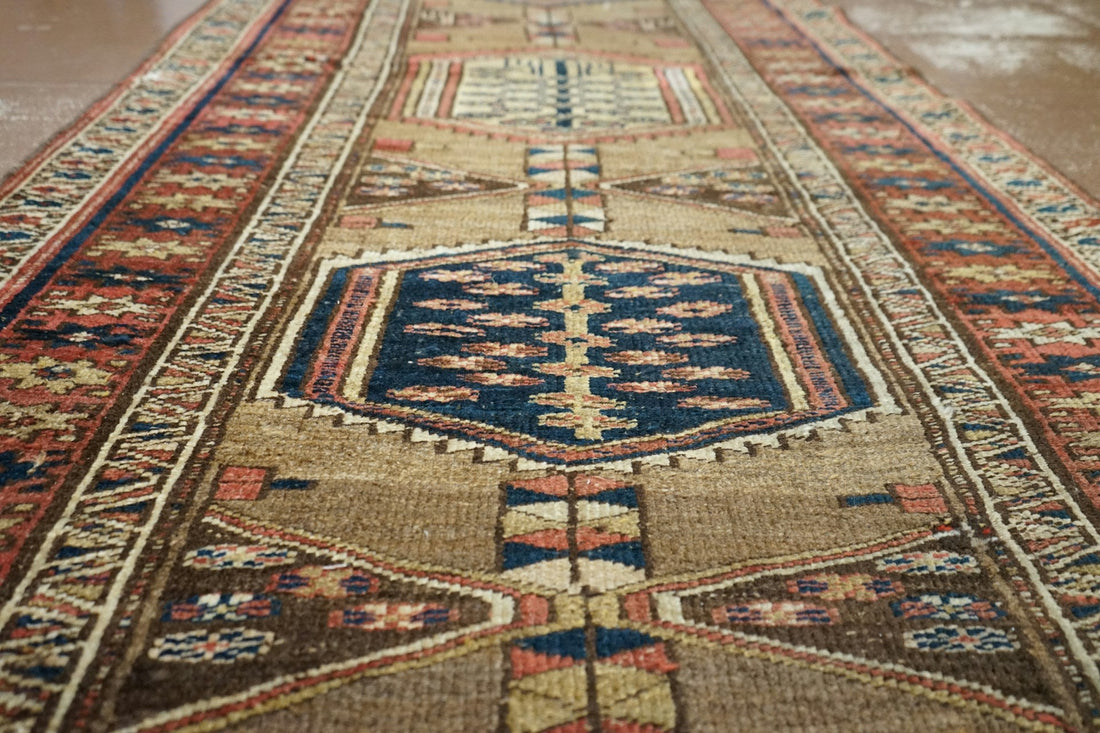Moving a handmade runner rug isn’t the same as dragging out an old plastic mat. These rugs are often one-of-a-kind pieces, stitched with care and packed with character. Whether you're shifting furniture or planning a full move across Frisco, the last thing you want is damage to a rug that’s hard to replace or repair. These rugs may look tough, but all it takes is a wrong fold, one sharp corner, or poor handling to cause a tear, loosen fibers, or break the weave.
Picture this: you're prepping your home for an open house. You’ve cleaned, boxed up clutter, and moved the big stuff. Then you get to the long handmade runner in the hallway. It’s heavy, awkward, and you’re not even sure where to start. Do you roll it? Fold it? Drag it? It’s easy to make a call that leads to damage without realizing it. That’s why proper preparation matters. If you plan right and take a few extra steps, you can protect the rug and save yourself added stress later.
Prepare The Rug For Moving
Before you grab the nearest end and yank it off the floor, take a few minutes to prep the rug the right way. You’ll lower the risk of damage and make it easier to move from one place to another.
Here’s what that should look like:
1. Give It a Clean
You don’t need to deep clean it before moving, but a surface-level vacuum goes a long way. Get rid of dust, grit, or sand stuck in the fibers. These particles can scratch or wear down the weave when it’s rolled up tight. Lightly vacuum both sides if possible, especially if it’s been sitting in a high-traffic area.
2. Check for Any Issues
Look for loose yarns or corners that are curling up. If the rug has fringe, give it a glance to see if any sections seem worn. Make a note of these, as damaged parts are more likely to get worse during a move. If there’s serious damage, don’t try to repair it yourself. Mark the spot and point it out once you’re ready to unload it.
3. Roll, Don’t Fold
Folding a handmade runner rug can crack the foundation or leave visible creases. Instead, roll it from the short end and keep it even. If the rug has pile, like a velvet texture, make sure you’re rolling it pile side in to protect the surface.
4. Wrap It for Protection
Once it’s rolled, wrap the rug with kraft paper or a cotton sheet. Avoid using plastic, as it can trap moisture and this may cause mildew, especially when the climate shifts in fall. Secure the wrapped rug with soft cotton rope or masking tape. Don’t use anything that leaves a residue.
5. Use Ties or Bands to Secure
To keep it from unfurling mid-move, use ties at both ends and one in the middle. Make sure it’s snug but not too tight. You want the roll to stay firm without crushing the rug’s shape.
Taking time to prep makes the second half of the move go a lot smoother. It helps protect the rug’s value and saves you from fussing with damaged fibers or uneven edges later.
Enlist Help From Others
Handmade runner rugs aren’t just heavy, they’re awkward too. Trying to drag one by yourself can do more than mess up your back. It can lead to snagging corners, scuffing floors, or even tearing the material. Whether you’re moving it from one room to another or loading it into a truck, it’s always better to have help.
Here’s why getting others involved makes a difference:
- Safer Lifting
With two or more people, you can lift and carry without dragging. This keeps the rug from catching on thresholds, furniture, or flooring.
- Better Control Around Tight Spaces
Runner rugs can stretch six to ten feet or more. In hallways or stair landings, it's easy to get stuck or bump into nearby walls. A team can tilt or angle the rug without rough handling.
- Less Risk of Injury
These rugs aren’t just long, they’re heavy. Lifting solo can lead to strain, especially when trying to pivot or manage stairs. Work with others to split the weight and communicate clearly while moving.
If you’re short on help, wait until someone is available. Don’t turn a heavy handmade runner into a last-minute chore you regret. It’s worth taking the time to move it carefully. Have one person on each end and move slowly together, checking that the wrap stays secure and nothing is snagging underneath.
By working as a team and taking your time, you reduce stress and keep both the rug and your home safe from damage. A little planning here goes a long way when it comes to moving handmade runner rugs through tight spots or busy spaces.
Use Appropriate Moving Equipment
Once you've wrapped and secured your handmade runner rug, the actual move part starts. No matter how short the distance is, equipment makes a big difference. Using the right tools helps prevent avoidable accidents like scrapes, drops, or floor damage. Trying to carry the rug with your hands the whole way isn’t just tiring, it leaves way more room for the kind of clumsy slip-ups that can cost you later.
Start with a flat dolly or rolling cart. These tools are easy to rent or borrow and give you a stable base to carry longer items. Position the rug in the center of the dolly and tie it if needed to keep it from shifting. This works especially well if you're passing through doorways or elevators.
Also, moving straps can be helpful when two people are carrying a rug together. These add support and evenly distribute the weight, so no one is bearing the full load and fumbling through corners.
If you’ve got stairs or tight areas to get through, pick up some corner protectors—not for the rug, but for your walls. When you're backing up or navigating a curve, it's easy to brush up against trim, corners, or light switches. Protecting those parts in advance prevents both wall marks and sudden snags to the rug fabric.
Loading the rug into a vehicle should also be done with care. Lay it flat when possible. Don’t stack boxes or furniture on top, even if the rug seems firm. This can crush the fibers. Try to secure it with ropes or bungee cords so it won’t roll around during the drive. Especially for longer moves around Frisco or out of town, the goal is to keep everything as tight and still as possible.
Skipping equipment and relying on strength alone often leads to more mistakes. Don’t risk all your earlier prep just to rush through this step. When it comes to handmade runner rugs, the right tools really do make the difference between an easy move and a damaging one.
Consider Hiring Professional Movers
There comes a point when you just have too much on your plate. If the rug is large, unusually shaped, or extra valuable, it may be worth calling in professional movers. Carrying a rolled rug might sound simple, but these rugs can be surprisingly slippery. On top of that, they’re hard to grip without the risk of unraveling.
Movers who’ve handled rugs before will usually take one look and know what type of wrap, padding, and transportation works best. But don’t assume all movers do things the same way. Make sure to explain that your rug is handmade so they know it needs a gentle touch. This includes how it’s loaded, handled, and even how it’s positioned next to other items in the truck.
You’ll also want to ask about insurance coverage, just in case something happens during the move. That way, if damage does occur, you’re not left covering the cost out of pocket. It’s especially important for rugs that are unique or have sentimental value.
One local example involves a family moving into a different part of Frisco just last fall. They thought their hallway runner would be a quick last-minute move. They rolled it up, tossed it in the trunk, and figured it’d be fine. But before they even made it to the new house, they had to slam on the brakes. The rug slid across the floor of the SUV, and when they went to unload it, they noticed frayed edges where it caught on something sharp. If they had used professionals or even better gear, that damage could’ve been avoided.
When the rug matters to you, it makes sense to trust someone who knows how to move it right. Whether it's the size, shape, or the value, don't downplay what could go wrong just to speed things up.
Safely Unroll And Place The Rug
Once you’ve arrived, don’t rush to slap the rug back down where it belongs. Now’s the time for just as much patience as the prep. Lay the rug flat on a clean surface and take a close look. You’re checking for any issues that may have happened during the move—corner damage, loose threads, or dirt from the floor of a truck or van.
Once you're ready to unroll, do it slowly. Let gravity do some of the work, and be sure there are no objects in the way that could snag the material. If it was tightly rolled, you might notice it doesn’t immediately flatten out. That’s normal. Let it settle for a day or so if it’s looking wavy or curved at the ends.
When placing it back into position, line it up along the wall or hallway keeping traffic flow in mind. Long runners in tight spaces can shift easily, so make sure it’s centered and straight. You can place a rug pad underneath to keep it from sliding, which also helps protect the backing from wear.
Check nearby furniture and give yourself enough clearance. If heavy pieces will be back on top of the rug, do so gently to avoid pressing dents into the rug’s pile, especially if it’s handmade with natural fibers.
Rushing through this part might seem fine at the moment, but it could make setup messier later on. A few careful adjustments keep your hallway or room looking sharp while keeping the rug protected from uneven spots or traffic damage.
Moving Your Handmade Rug Safely
Moving a heavy handmade runner rug around Frisco the right way takes more than just muscle. From prepping and lifting to using equipment and laying it back down, every step has a purpose. When you're dealing with a rug that means something—whether it's the design, the price tag, or the family memories stitched into it—you want to give it the same care as any valuable item in your home.
The biggest thing to remember is that rushing adds risk. You’re far better off going slow and checking your work as you go. Prep each step, ask for help, and pay attention to the small details. It doesn’t take much to go from smooth and stress-free to damaged and expensive to fix. Take care, plan ahead, and your rug will keep its place looking sharp for years to come.
If you're looking for inspiration or options to protect and refresh your space, explore RugTown's collection of handmade runner rugs. These carefully crafted pieces combine durability and design, making them a standout addition to any hallway or entryway.

